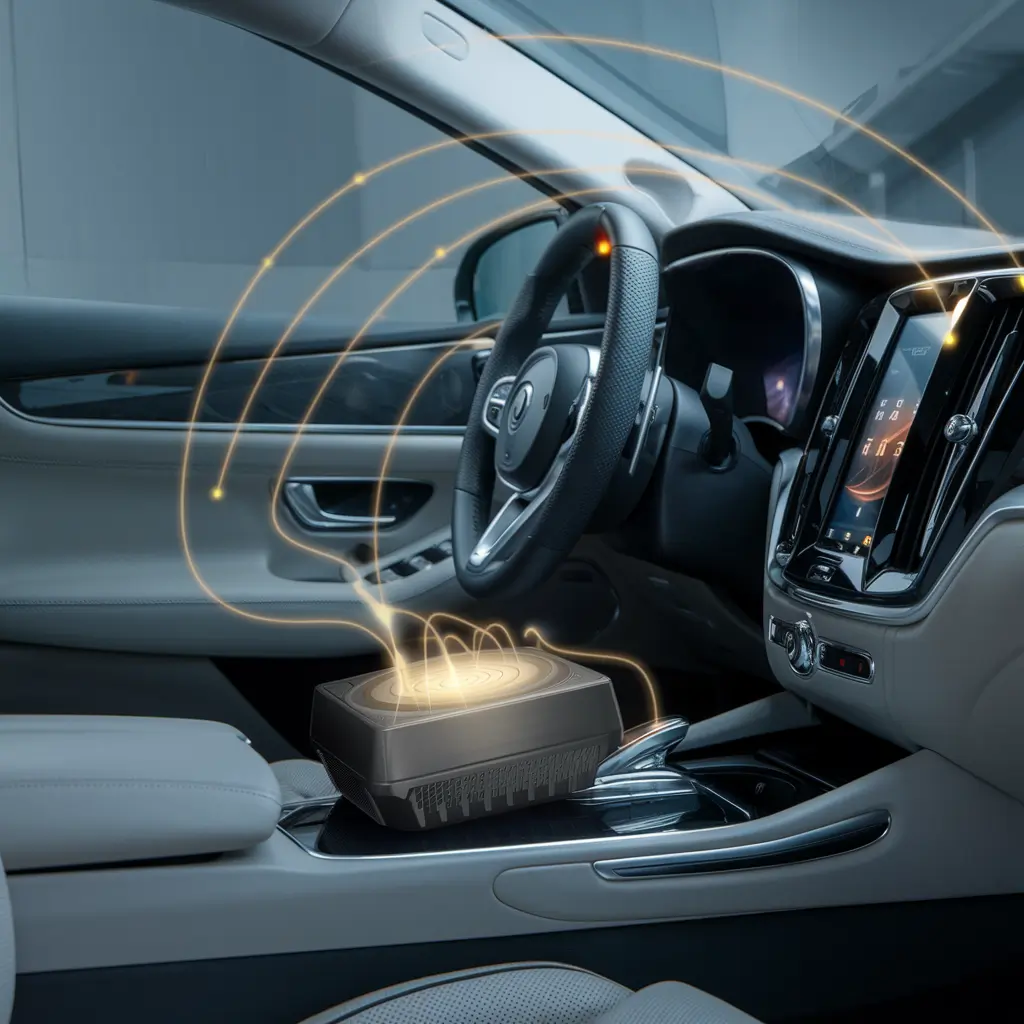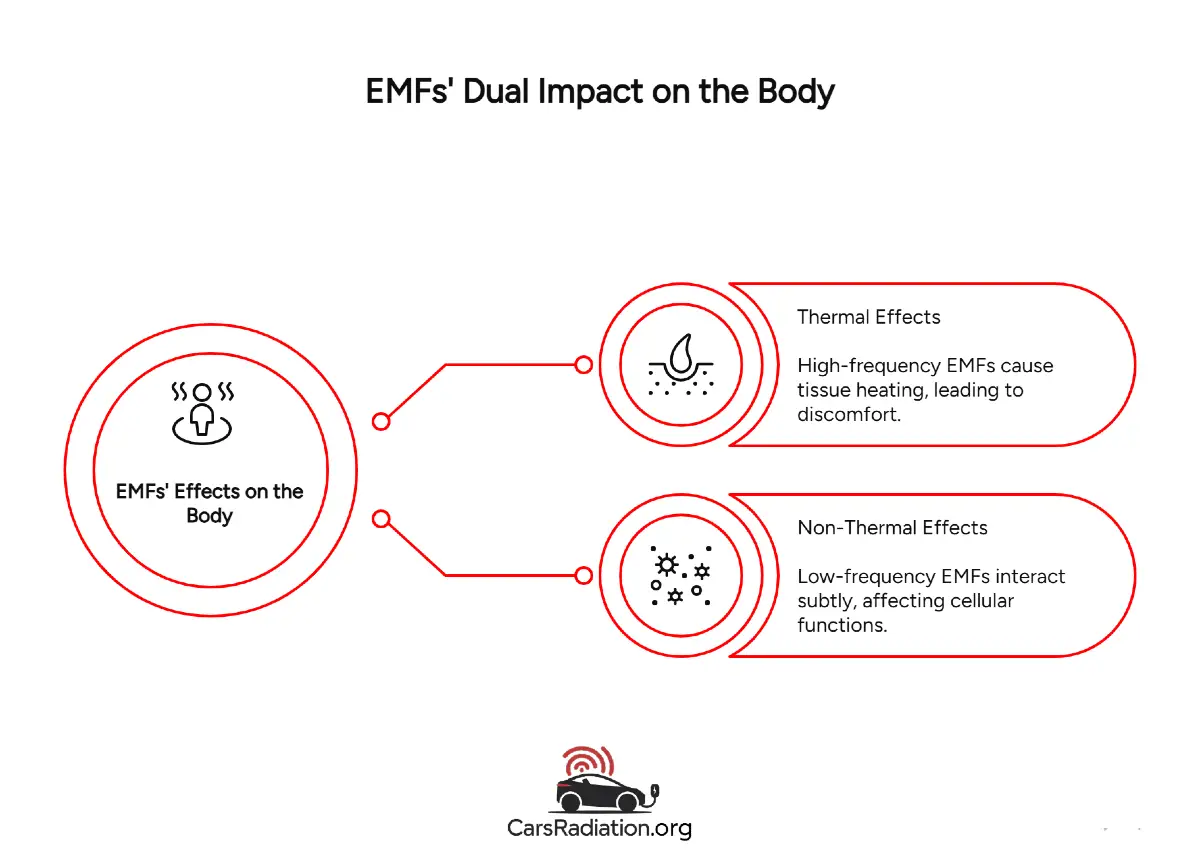The Hidden Side of Electric Vehicles: Understanding Electromagnetic Fields (EMFs)

Electric vehicles (EVs) have become a central solution in the move toward low-emission transport. Their benefits (zero tailpipe emissions, reduced fuel dependence, and energy efficiency) are well established. However, alongside these advantages, there are operational characteristics that deserve attention. One such characteristic is the presence of electromagnetic fields (EMFs) in and around the vehicle.
This topic, while not often discussed in consumer-facing materials, has measurable parameters and technical implications worth outlining.
Defining Electromagnetic Fields in the Context of EVs
Electromagnetic fields are physical fields generated by electrically charged systems. These fields exist in most modern environments, from household wiring to industrial equipment, and are produced whenever current flows. In the case of EVs, EMFs emerge due to the electric drivetrain, power converters, and battery modules, all of which handle large and variable electrical currents.
The frequencies involved are in the extremely low-frequency (ELF) spectrum, typically under 3 kHz. These ELF fields are a byproduct of high-load circuits and switching components, and they are different in distribution and magnitude compared to those found in non-electric vehicles. Their strength and proximity to passengers depend on factors such as component placement, shielding practices, and power demand at a given moment.
Two Types of Effects: What Happens to the Body?

Electromagnetic fields (EMFs) can affect the human body in two main ways:
- Thermal Effects: These occur when high-frequency EMFs (like radio frequencies and above) cause heating in body tissue. It’s similar to standing close to a space heater, your skin warms up. This heating effect is used in medical and industrial settings where it’s carefully controlled. But if the exposure happens in everyday situations without proper limits, it can cause discomfort or even damage to tissues over time.
- Non-Thermal Effects: Unlike thermal effects, these don’t cause noticeable heating. Low-frequency EMFs, like the ones from electric motors and batteries in electric vehicles, fall into this category. Even though they don’t produce heat, they can still interact with the body’s systems, possibly affecting nerve signals or how cells work. Because these effects are not felt right away, they raise concerns about long-term exposure, especially when the interaction with biological processes is still not fully understood.
 “Electromagnetic fields produce thermal effects that cause biological tissues to heat up. This can be harmful to the health when the energy absorption greatly exceeds the basal metabolism level of the human body. Furthermore, low-frequency electric and magnetic fields are likely to trigger non-thermal effects, such as the stimulation of sensory and nervous tissues.
“Electromagnetic fields produce thermal effects that cause biological tissues to heat up. This can be harmful to the health when the energy absorption greatly exceeds the basal metabolism level of the human body. Furthermore, low-frequency electric and magnetic fields are likely to trigger non-thermal effects, such as the stimulation of sensory and nervous tissues.
These effects are acute. They occur in the short term (from a few milliseconds to a few hours) and disappear spontaneously when exposure ceases, provided that they have not caused irreversible disorder (cardiac fibrillation, tissue necrosis, etc.). Such situations are encountered only by accident in the workplace and should never occur in everyday life.”
-Staebler, Patrick. Human Exposure to Electromagnetic Fields: From Extremely Low Frequency (ELF) to Radiofrequency. ISTE Ltd and John Wiley & Sons, Inc., 2017
Why It’s Important to Pay Attention
While low-frequency magnetic fields may not cause immediate symptoms, long-term exposure can lead to gradual biological effects. These effects are not sudden or extreme but may include small changes in how cells and systems in the body work. The exact nature of these changes is still being studied, and no final conclusions have been reached, but the potential for harm over time remains a concern.
What the Research Shows
Scientific studies have observed that long-term exposure to extremely low frequency magnetic fields (ELF-MF) above 0.4 microtesla (µT) may be linked to an increased risk of childhood leukemia, particularly acute lymphoblastic leukemia. A widely cited meta-analysis, which combined the results of several case-control and cohort studies, supports this possible connection.
Simple Steps to Reduce Magnetic Field Exposure
While electric vehicles (EVs) offer environmental and economic benefits, it is advisable to adopt measures that can lower prolonged exposure to magnetic fields:
- Select with Care: Check vehicle models for their electromagnetic field (EMF) output. Designs with simpler electronics or optimized layouts may emit lower levels.
- Limit Exposure Duration: Reduce the time spent inside the vehicle when the electrical system is active. For hybrid vehicles, avoid sitting inside when the combustion engine is engaged or during charging cycles.
- Apply Field Reduction Technologies: Solutions such as SafeFields’ active cancellation systems can assist in reducing cabin exposure to low-frequency magnetic fields.
Looking Forward: Technology with Caution
Electric vehicles represent an important step toward reducing emissions and moving to cleaner transportation. But to make the right decisions, we need to fully understand how these vehicles affect health and safety.
Research efforts, including those by CATARC, are helpful, yet they also show that our knowledge is still limited. Continued work between engineers, researchers, and policy makers is needed to make sure EVs can keep improving without ignoring safety concerns.

